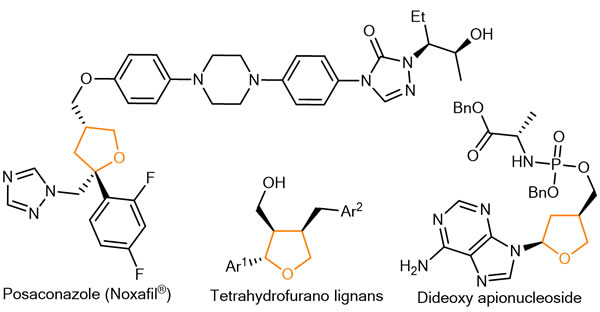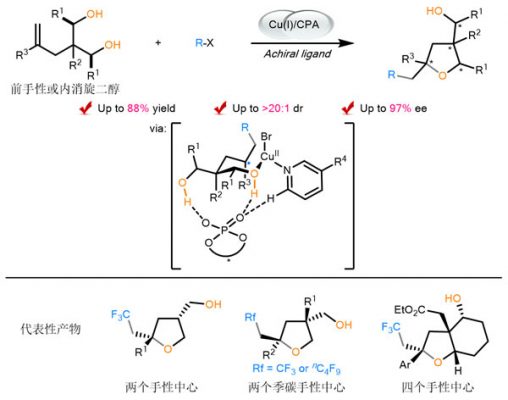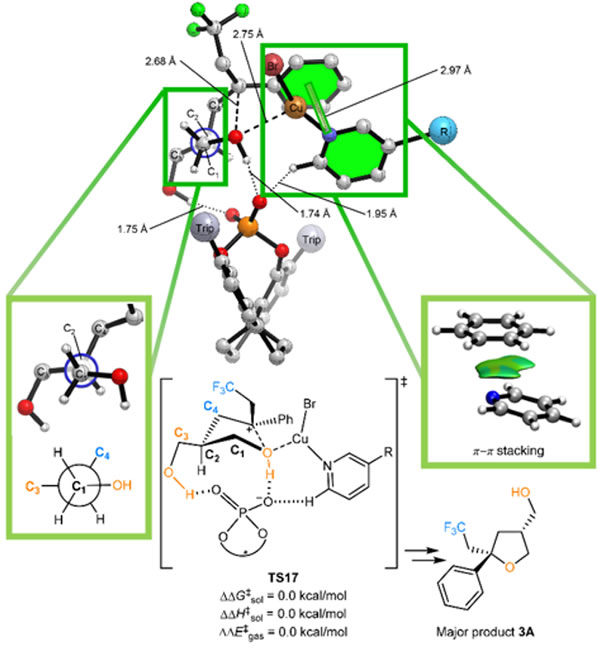A breakthrough paper by researchers at Southern University of Science and Technology (SUSTech) could lead to improved clinical drugs derived from natural compounds.
Recently, Professor Xinyuan Liu from the Department of Chemistry has led his research team to publish a groundbreaking paper in the high-impact academic journal, Nature Catalysis. The article is entitled “Catalytic enantioselective desymmetrizing functionalization of alkyl radicals via Cu(I)/CPA cooperative catalysis.”
There has been significant progress in developing new enantioselective desymmetrization reactions. These reactions are used for synthesizing molecules that have been enantiomerically enriched. So far, the majority of reactions in this field have been desymmetrization transformations involving ion species. Considerably fewer reactions applying the catalytic enantioselective radical desymmetrization process have been discovered.

The research team recognized that chiral tetrahydrofurans that bear multiple stereogenic centers are functional core units for both vital natural core units and effective clinical drugs. They developed a catalytic enantioselective desymmetrizing transformation using varying radical precursors in the presence of Cu(I)/CPA catalysis. Their approach would lead to the rapid assembly of functionally diverse enantioenriched tetrahydrofurans. Their analogs (opposing chiral) that resulted from the reactions would also have multiple stereocenters.

Following the creation of the molecules, their calculations revealed that the π–π stacking interaction between the coordinating Lewis base and the phenyl group of the substrate was the critical factor in determining the stereoselectivity of the benzylic position. The second factor was the hydrogen-bonding network between the diol and CPA anion.

This discovery could lead to improved medicines derived from natural compounds, leading to better health care outcomes for society as a whole.
The co-first authors were SUSTech research scholar Yongfeng Cheng, research assistant professor Qiangshuai Gu, graduate student Zhanglong Yu, and Zhejiang University’s Jiren Liu. SUSTech Professor Xinyuan Liu and Zhejiang University Professor Xin Hong were the corresponding authors of the paper, and SUSTech and Zhejiang University were the communication units.
Financial support from the National Natural Science Foundation of China, Shenzhen Special Funds, Shenzhen Nobel Prize Scientists Laboratory Project, and ‘Fundamental Research Funds for the Central Universities’ is gratefully acknowledged. Calculations were performed on the high-performance computing system at the Department of Chemistry, Zhejiang University.
Paper link: https://www.nature.com/articles/s41929-020-0439-8
Proofread ByChris Edwards
Photo ByDepartment of Chemistry, Qiu Yan